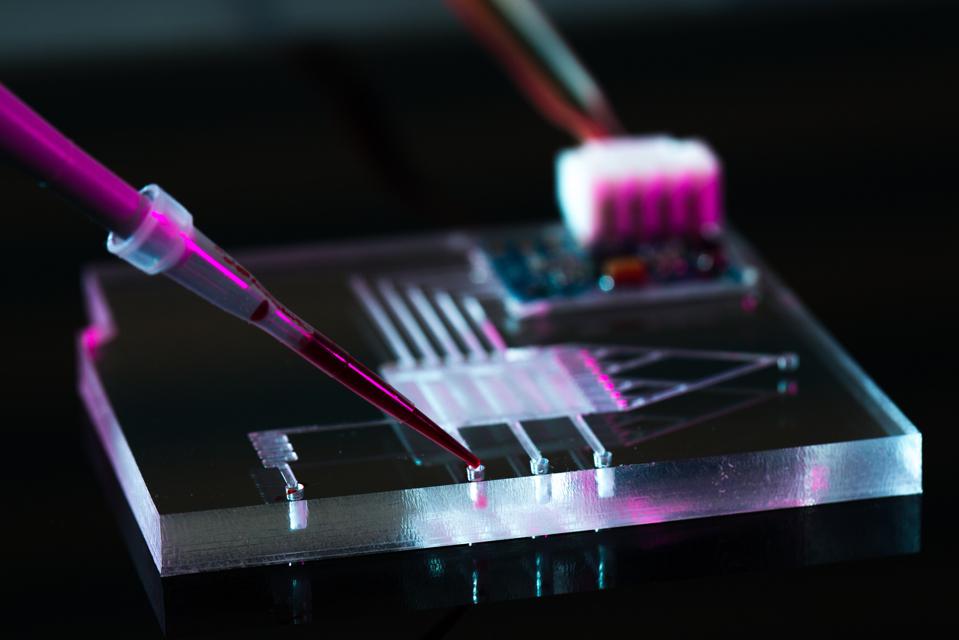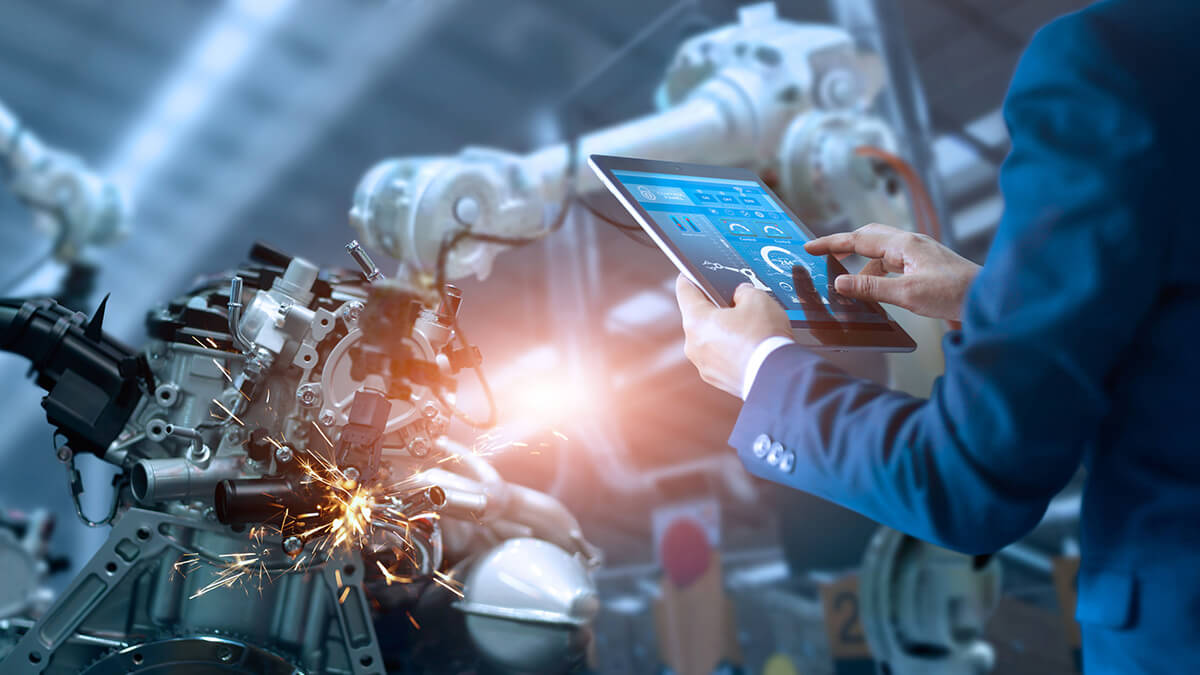Nanotechnology in Industrial Applications: Automotive and Construction Industries are the biggest gainer

The scale of a nanometer is difficult to comprehend. A nanometer is one-billionth of a meter, or 1/80,000th of the diameter of a human hair, a million times smaller than the length of an insect, or the amount of hair that grows on a man's beard in the time it takes him to raise a razor to his face.
Yet, since matter behaves differently at that level, nanotechnology—the ability to manipulate matter at the nanoscale (roughly 1 to 100 nanometers)—is having a major effect on science, engineering, and technology.
Nanotechnology is concerned with a wide range of materials and products that depend on changes in physical properties due to their small scale. The automotive industry, which absorbs a lot of material technology, is showing a lot of interest in this.
Nanotechnology's effect on society has been compared to the inventions of electricity and plastic. It has the potential to change almost all we use today. Nanotechnology has a wide variety of uses, from better golf clubs and stain-resistant pants to potential dreams of industrial transformation and cancer treatment.
What is Nanotechnology and what is special about it?
The development and application of physical, chemical, and biological systems at the atomic or molecular scale to submicron dimensions, as well as the incorporation of the resulting nanostructures into larger systems, are all part of nanotechnology. As a result, nanotechnology deals with a wide range of materials and goods that depend on changes in physical properties due to their small sizes.
The ability to see and manipulate individual atoms and molecules is at the heart of nanotechnology and nanoscience. The matter has special physical, chemical, and biological properties at the nanoscale, allowing for new applications. Some nanostructured materials are stronger or have different magnetic properties; others are better at conducting heat or electricity, or as their size or composition changes, they become more chemically reactive, reflect light better, or change color.
Some of the common products where nanotechnology is already used are:
- Furniture
- Sunscreen
- Clothing
- Coating for car painting
- Adhesives
- Computers and electronic devices
- Tennis balls
Application of Nanoparticles:
Application of Nanotechnology in the automotive Industry: Driving opportunities with speed
What if you could walk into a car dealership, purchase a tiny, colorful packet of seeds, and leave them to sprout outside your home? Imagine developing nanoparticles instead of seeds to create your dream car—one molecule, one particle at a time. Sounds like something out of a science fiction movie, doesn't it? However, thanks to nanotechnology, this may soon be a possibility.
Nanotechnology has penetrated almost every industry today, from biotechnology to industrial production. Nanotechnology is also being investigated by the automotive industry to create vehicles that are shinier, safer, and more energy-efficient.
Improved engine performance and fuel consumption were made possible by wear-resistant tires, car bodies made of lighter but stronger nanomaterials, and improved miniaturized electronic systems. The main emphasis is on reducing weight to increase fuel economy. Recent advancements in this field include replacing glass windows with polymers and using durable, rust-proof, nano-engineered thermoplastic materials instead of conventional steel chassis components. Nanoparticles are now being used to reinforce tires and reduce resistance, resulting in fuel savings.
- Nano-engineering of aluminum, steel, asphalt, concrete, and other cementitious materials, as well as their recycled forms, has a lot of potential for improving the efficiency, resiliency, and durability of highway and transportation infrastructure components while lowering their life cycle costs. Innovative capabilities, such as self-repairing structures or the ability to produce or transfer electricity, can be incorporated into existing infrastructure materials in new systems.
- Bridges, tunnels, rails, parking structures, and pavements can be able to be continuously monitored for structural integrity and efficiency using nanoscale sensors and devices. Nanoscale sensors, communications devices, and other nanoelectronics-based technologies can also help drivers maintain lane location, avoid collisions, change travel routes to avoid congestion, and develop drivers' interfaces with onboard electronics.
- The advantages of using nanotechnology-enabled lightweight, high-strength materials in almost any tovehicle will be “game-changing.” For example, it has been calculated that reducing the weight of a commercial jet aircraft by 20% could reduce fuel consumption by up to 15%. According to a preliminary NASA study, developing and using advanced nanomaterials with twice the strength of traditional composites could reduce the gross weight of a launch vehicle by up to 63 percent. Not only will this save a large amount of energy used to launch satellites into orbit, but it would also allow for the production of single-stage to orbit launch vehicles, lowering launch costs, improving mission efficiency, and allowing for the development of alternative propulsion concepts.
Application of Nanotechnology in The Manufacturing Industry: For future growth, traceability will be critical.
The future of nanotechnology in the construction industry should be regarded not only in terms of improved material properties and functions but also in terms of energy conservation. This is an especially significant prospect since industrial buildings and residential houses consume a large percentage of total energy (for example, 41% in the United States) for applications such as heating, lighting, and air conditioning.
The construction industry is constantly changing, with newer and improved innovations being introduced and implemented all the time. These innovations are transforming the way we view the market and conduct business, and they are the face of the future.
- Nanotechnology can allow the creation of materials with improved insulation properties, as well as intelligent structures capable of maximizing energy efficiency. With the aid of nanotechnologies, new insulating materials have been created. Nanofoams, nanostructured aerogels, and vacuum insulated panels are examples of insulating materials (VIPs).
- Self-healing materials are a class of materials that can reform broken bonds in response to external stress. The production of self-healing polymers and composites has recently gotten a lot of attention, thanks to self-healing processes in nature and the biological world. Nanoscale studies offer more precise patterns for predicting the outcomes of various healing methods.
- Mechanical stability and crack prevention (in cement); improved mechanical and thermal properties (in ceramics); real-time structural health monitoring (NEMS/MEMS); and successful electron mediation are all expected benefits of Carbon Nanotubes (CNTs) (in solar cells).
- The main use for nanomaterials in construction is expected to be coatings. Architectural paints, water sealers, and deck treatments, as well as treatments applied during fabrication, such as scratch-resistant coatings on vinyl or wood flooring, are all designed to keep things safe.
Major Highlights of the Market:
- In 2016, the Volkswagen Nanospyder, a completely recyclable vehicle concept, was one of the entries in the annual LA Auto Show's Design Challenge. The Nanospyder has just five years to keep up with the new automotive safety advances. It would make a vehicle that could be assembled, disassembled, and reassembled on a microscopic level using nanotechnology.
- Increased adoption of nanotechnology in the United States has changed the manufacturing landscape in the country, propelling market development. Moleaer Inc., NDB Inc., Rokk3r, Ike Scientific LLC, and Ligandal Inc. are among the most successful startups in the nanotechnology industry in the United States.
- In 2018, L3 Harris Technologies, Inc. agreed to buy a minority stake in Peak Nano Optics, LLC (Peak Nano), a Dallas-based nanotechnology company, to gain access to its optics technology and strengthen its current product lines and services for military ISR and commercial customers.
Are there any dangers associated with nanotechnology?
As with any emerging technology, there are risks to consider in addition to the benefits. Nanotech fibers and particles can become airborne, and several studies have shown that inhaling airborne nanoparticles and nanofibers can be almost as toxic as inhaling asbestos, causing a variety of pulmonary diseases.
Other ostensibly innocuous applications of nanotechnology may have long-term consequences. The bacteriostatic silver nanoparticles used in socks to minimize foot odor, for example, are released in the wash and end up in the sewer system. This could lead to the extinction of beneficial bacteria that are essential to natural habitats, farms, and waste treatment.
While research into the risks continues, and the scientific community urges caution when handling nanomaterials, no regulations on nanotechnology have been enforced due to fears of stifling innovation. With the advent of the COVID-19 pandemic, the importance of health and healthcare has been realized harshly. Although safe, this technology is said to carry grave risks too. Health hazards such as nanopollutants, social and economy-related risks such as privacy invasion, nanotech weapons can be categorized as risks in the nanotechnology market.
Conclusion: Growing acceptance across industries, making nanotechnology a reality
The eventual fate of nanotechnology in the development business ought to be respected not just as far as improved material properties and capacities yet in addition regarding energy preservation.
Nanotechnology has a plethora of applications in the automotive industry. Nanotechnology is being used to improve vehicle batteries, nanoparticulate air filters, and ultrathin anti-glare layers for windows and mirrors, among other things. Future applications could include energy-harvesting bodywork, self-healing paint, shape shifting skin, and improved fuel cell efficiency in future electric and hydrogen-powered cars, all fascinating developments that could drive the next wave of automotive innovation.
Fuel cells, a renewable alternative to hydrocarbon fuels, will benefit from nanotechnology as well. Through the use of nanoparticles of platinum or other metals, nanotechnology provides a solution for dramatically lowering the cost of fuel usage.











